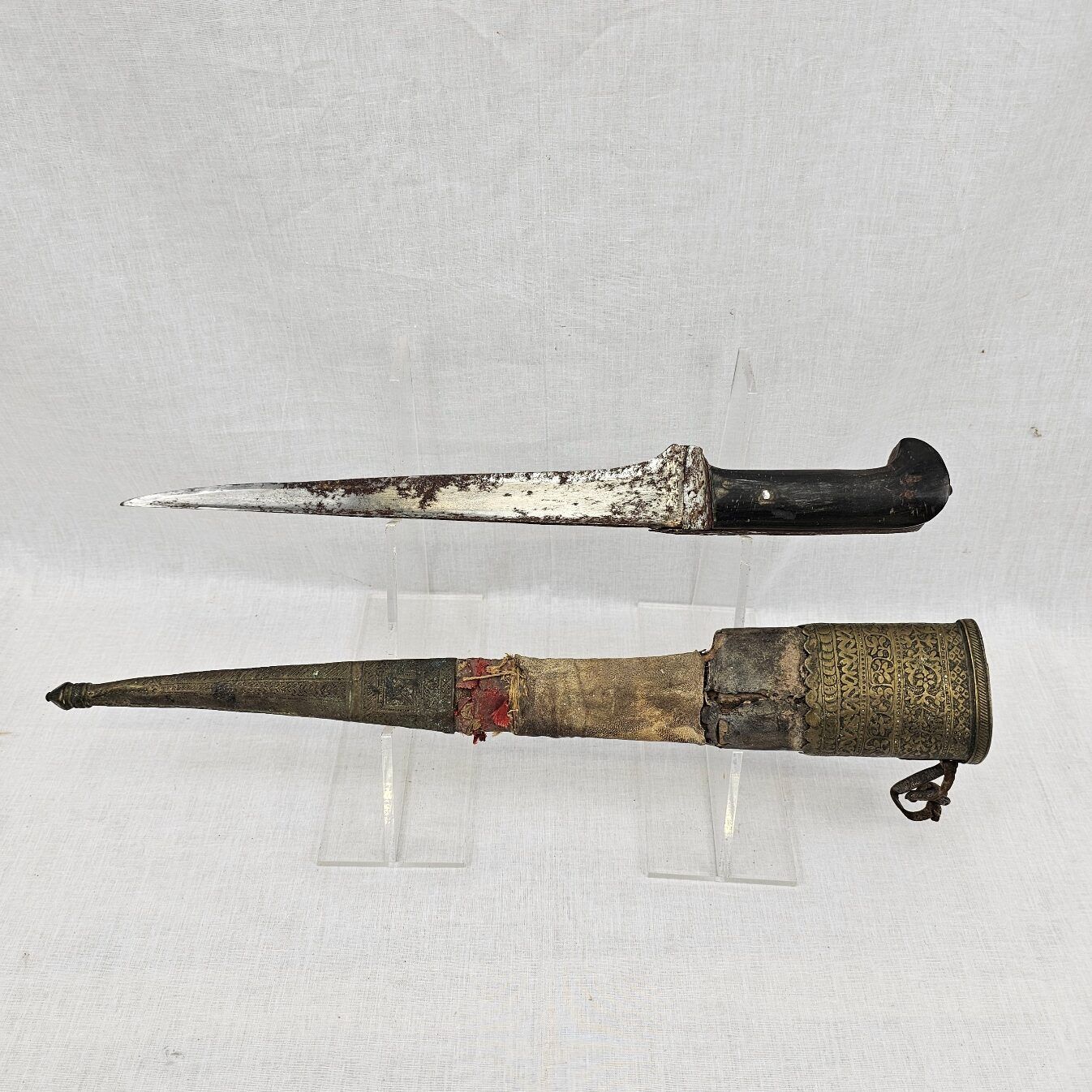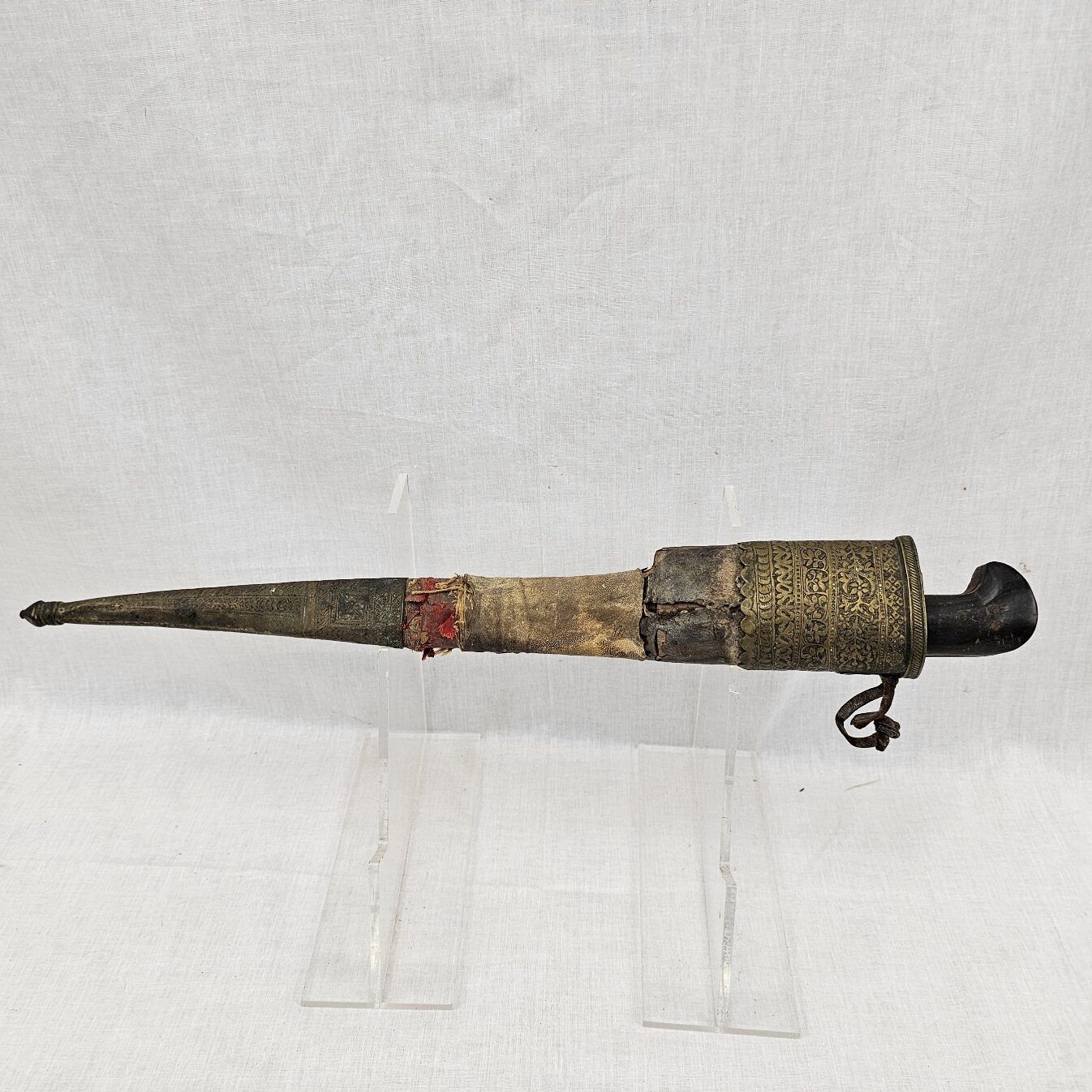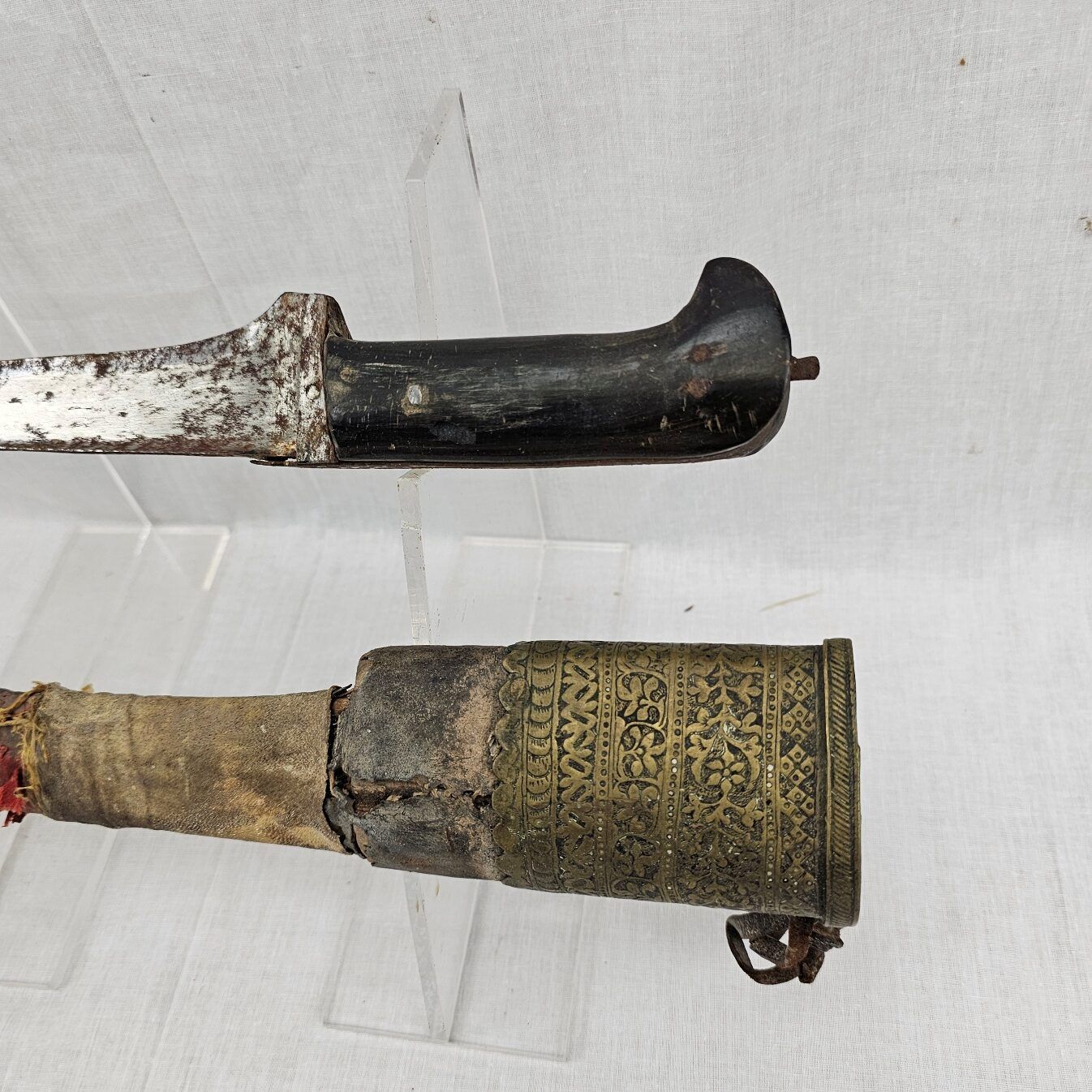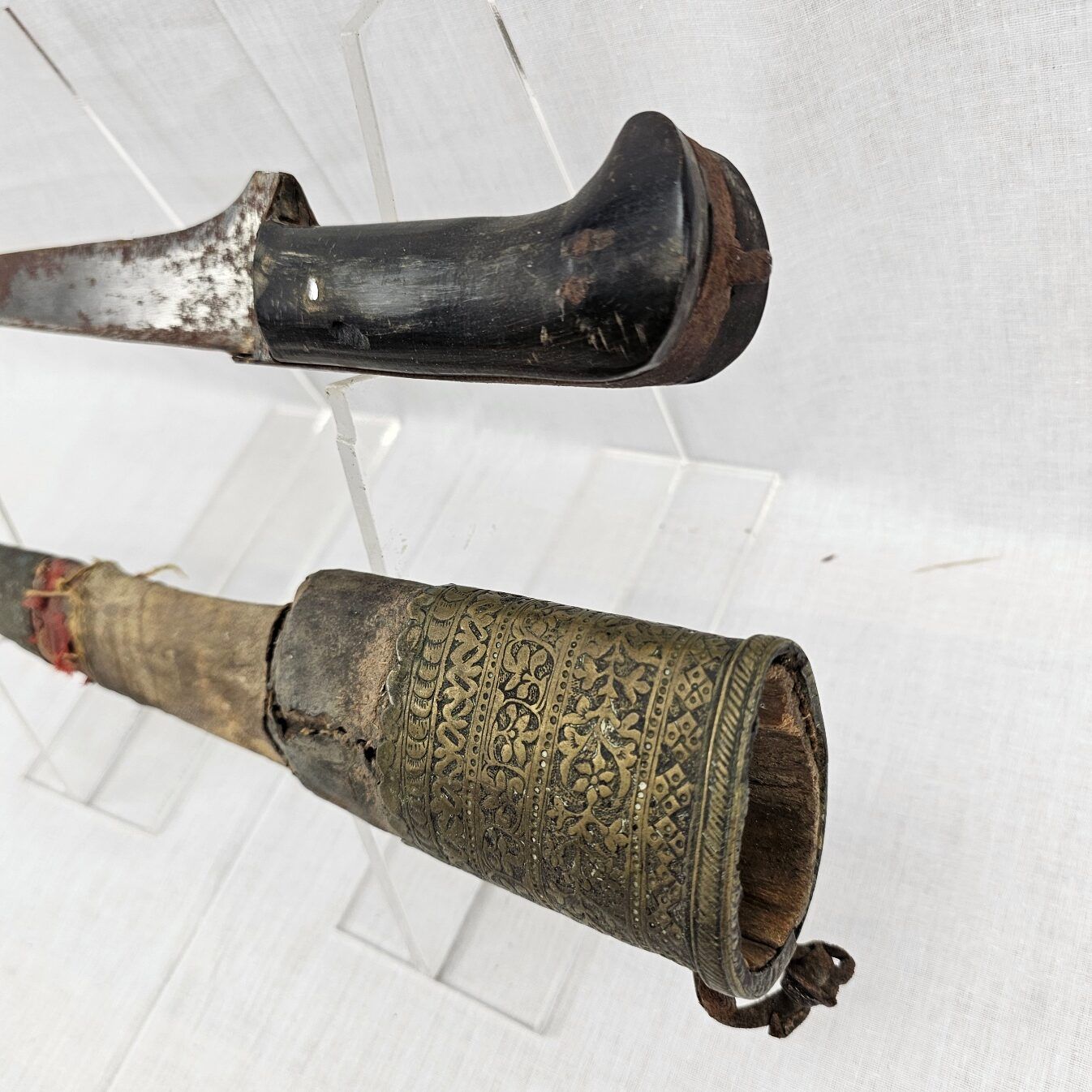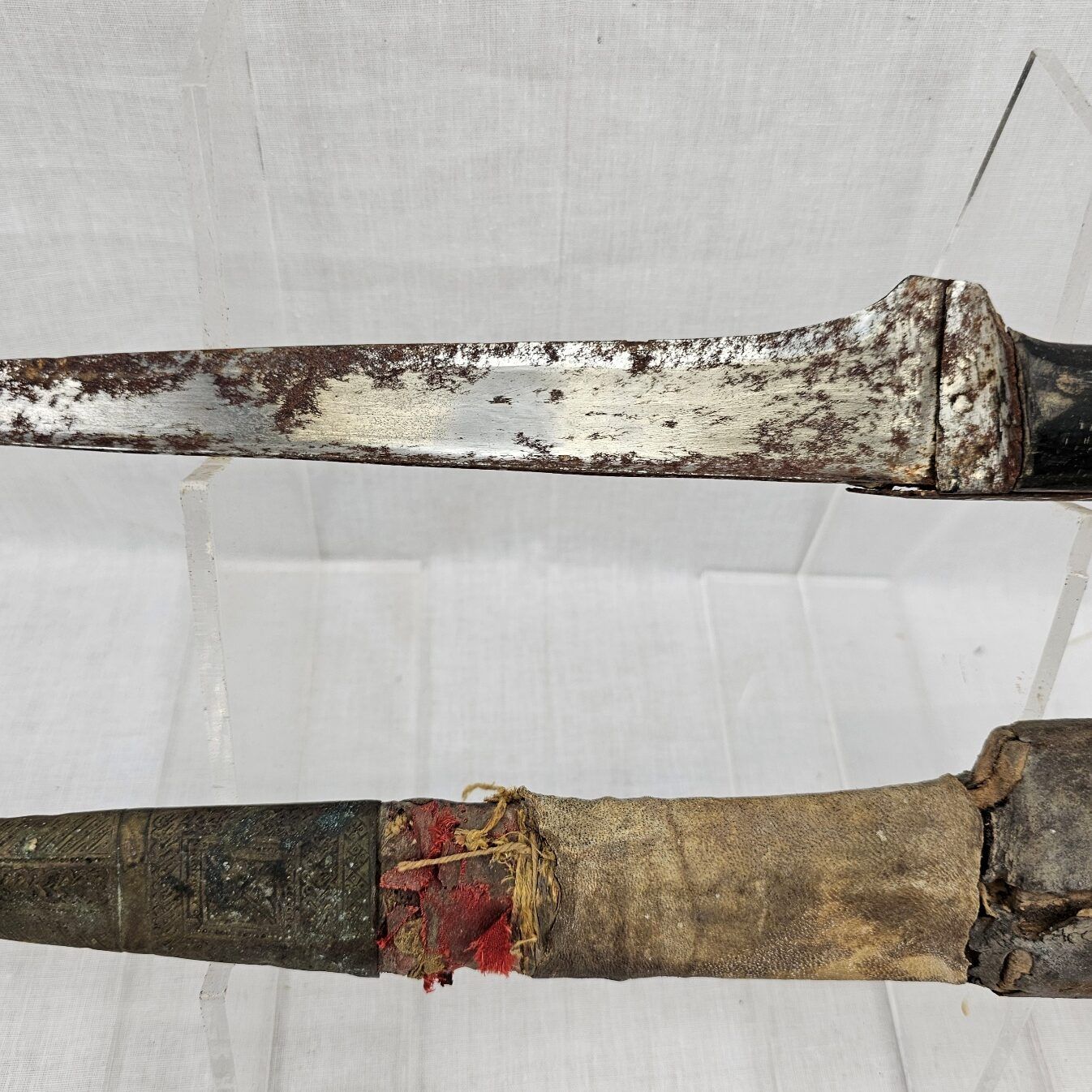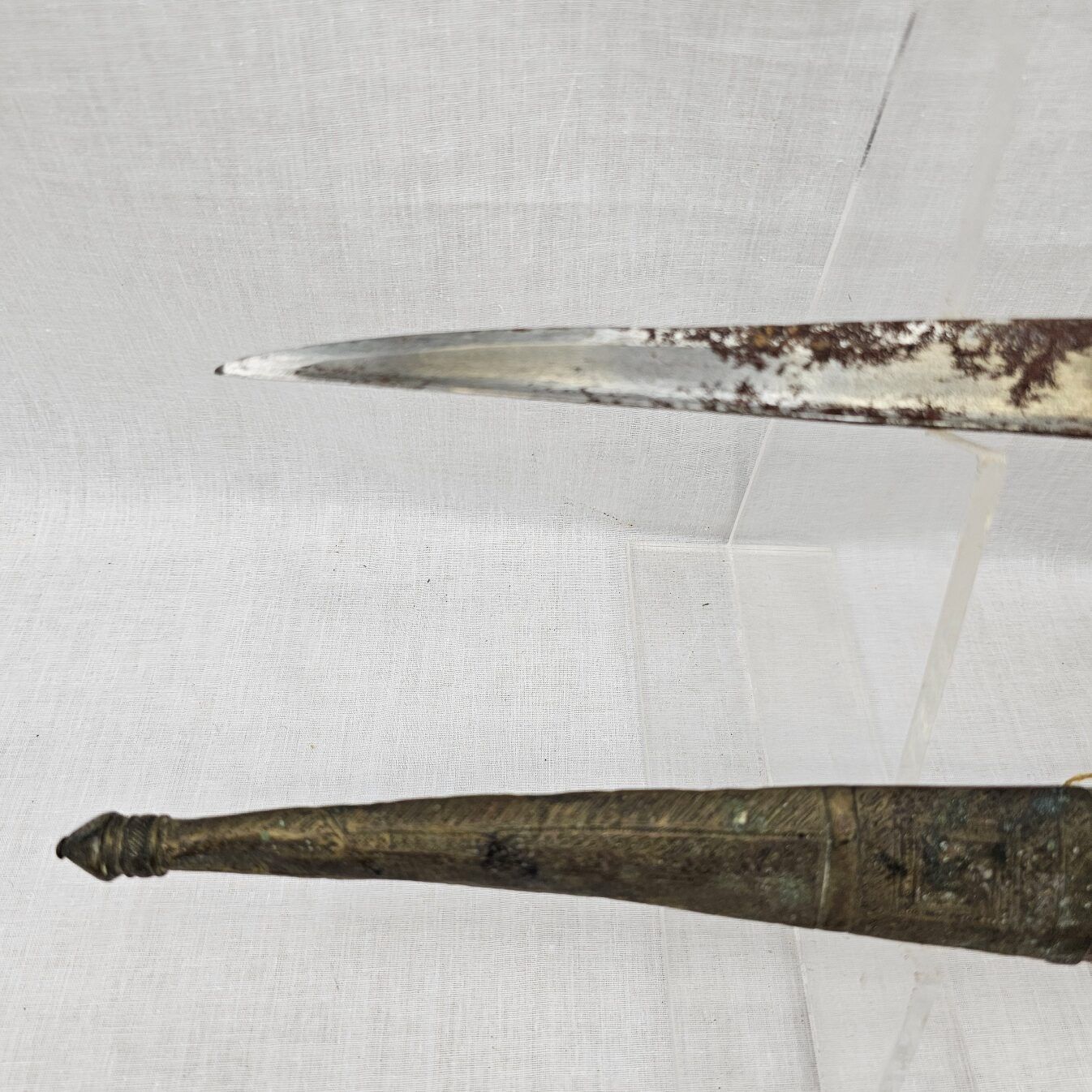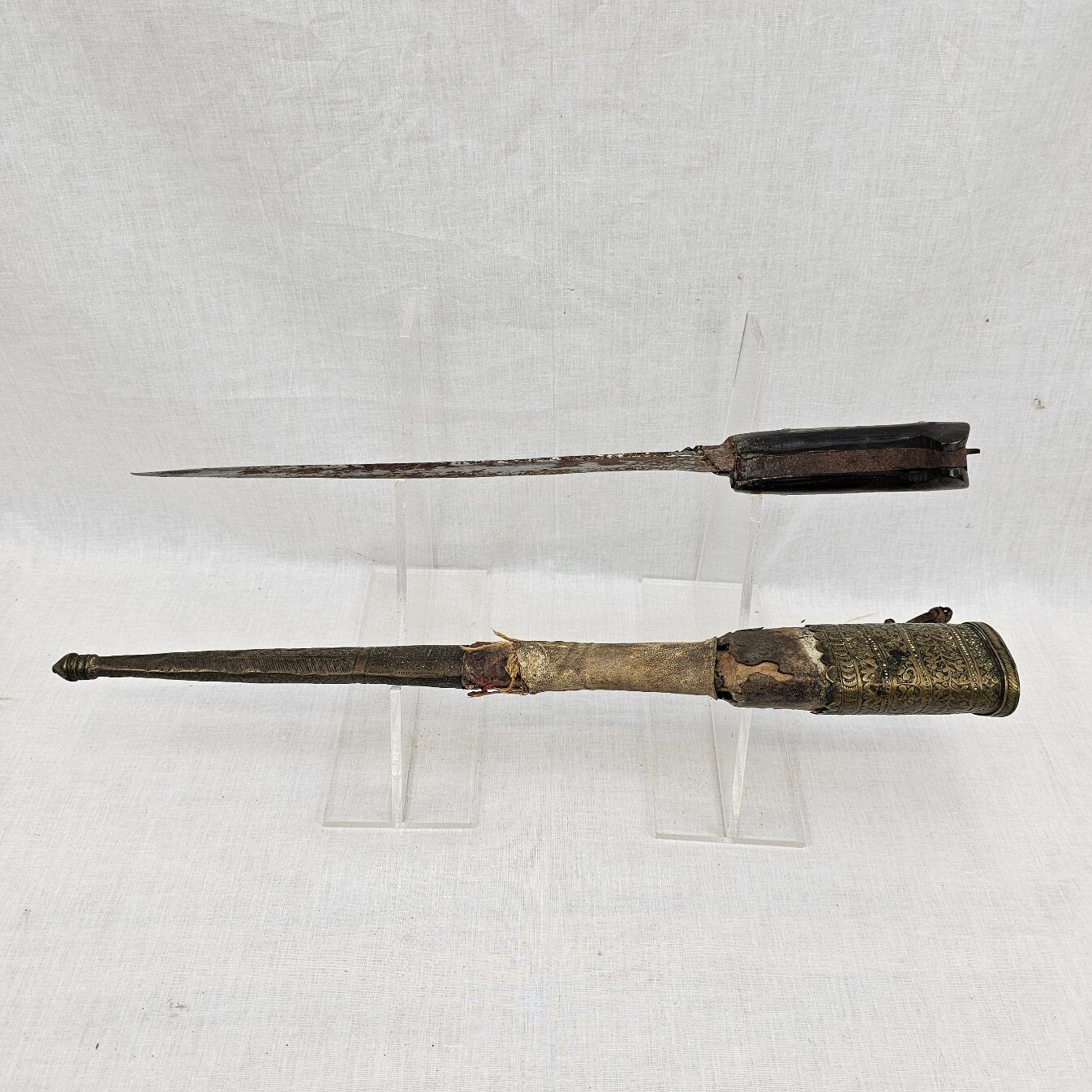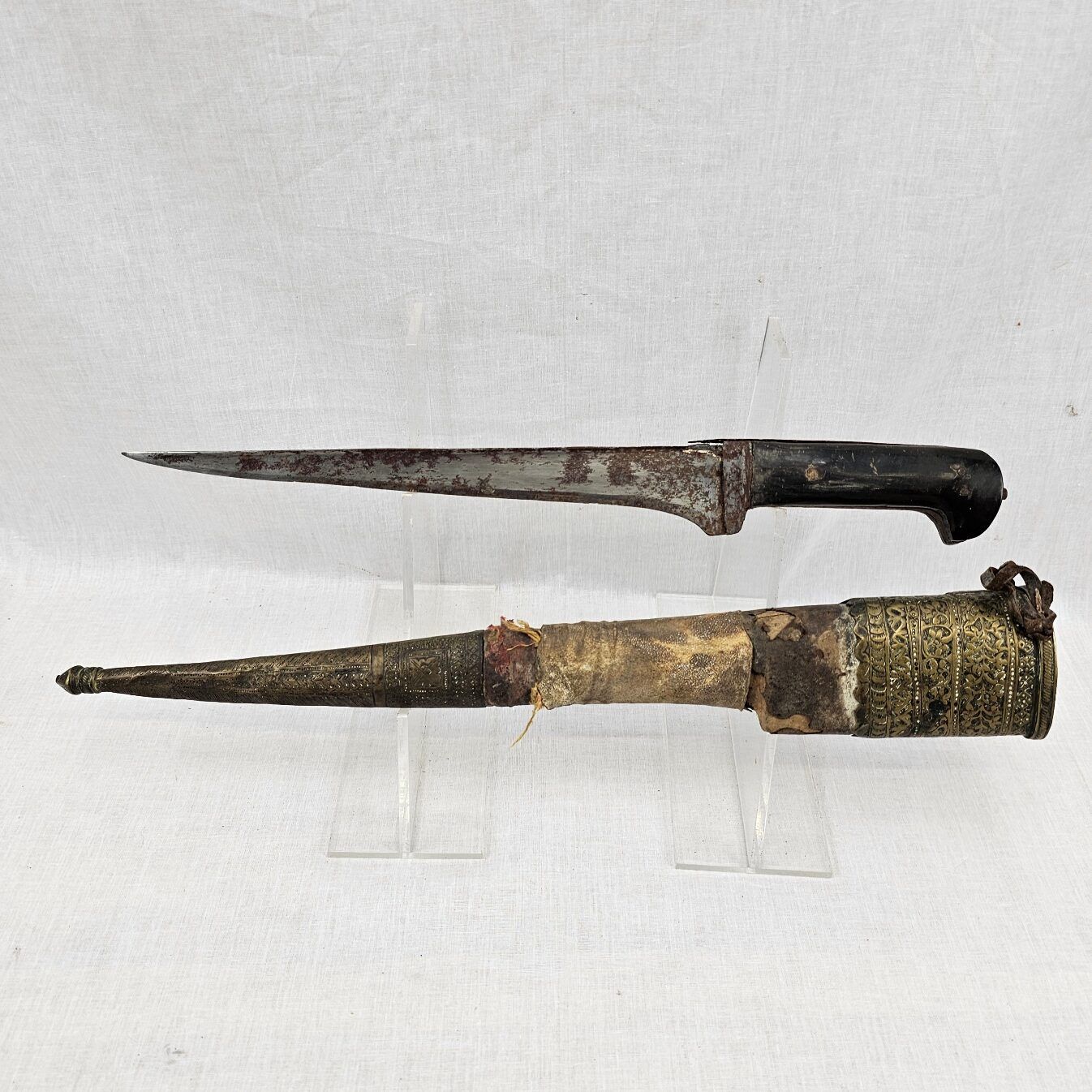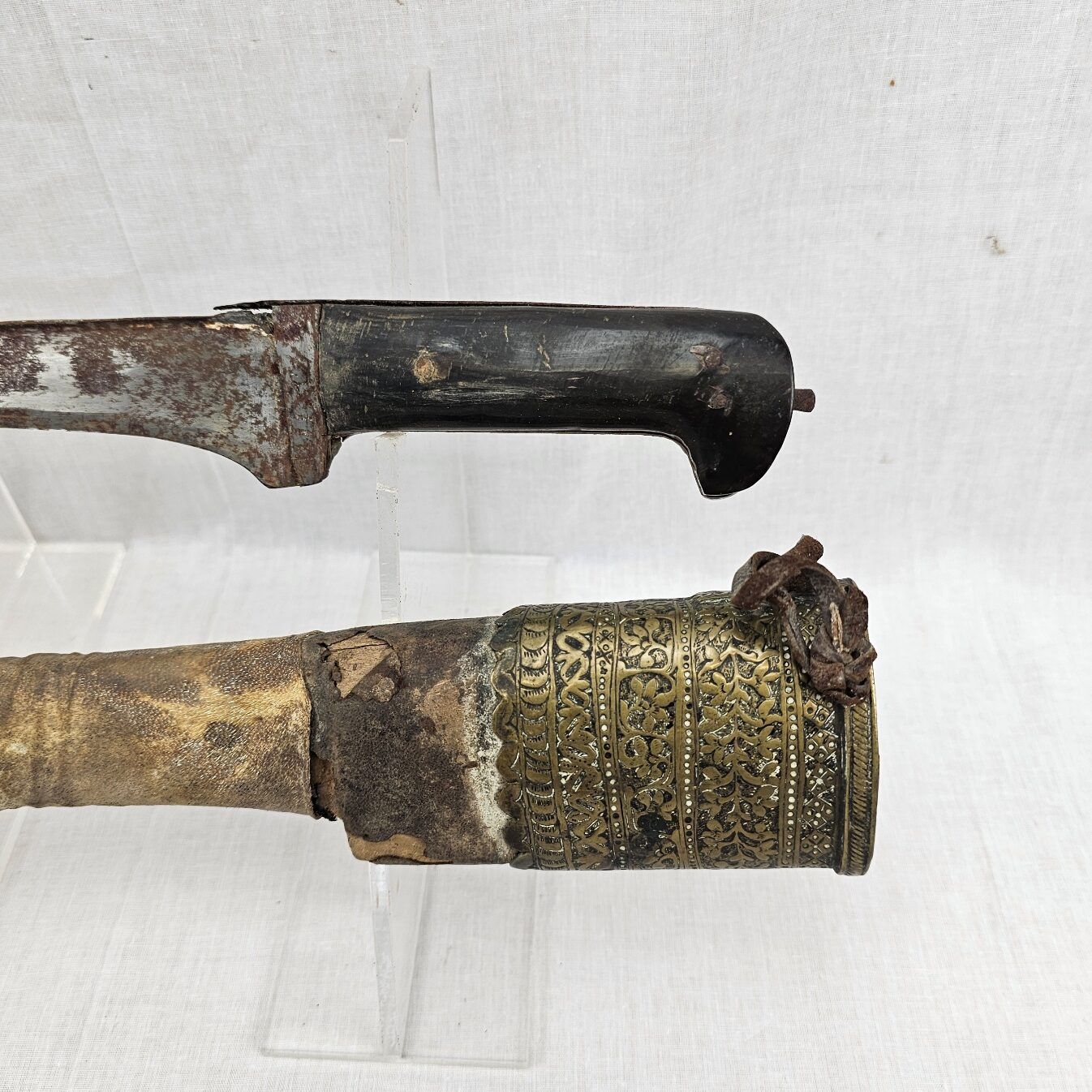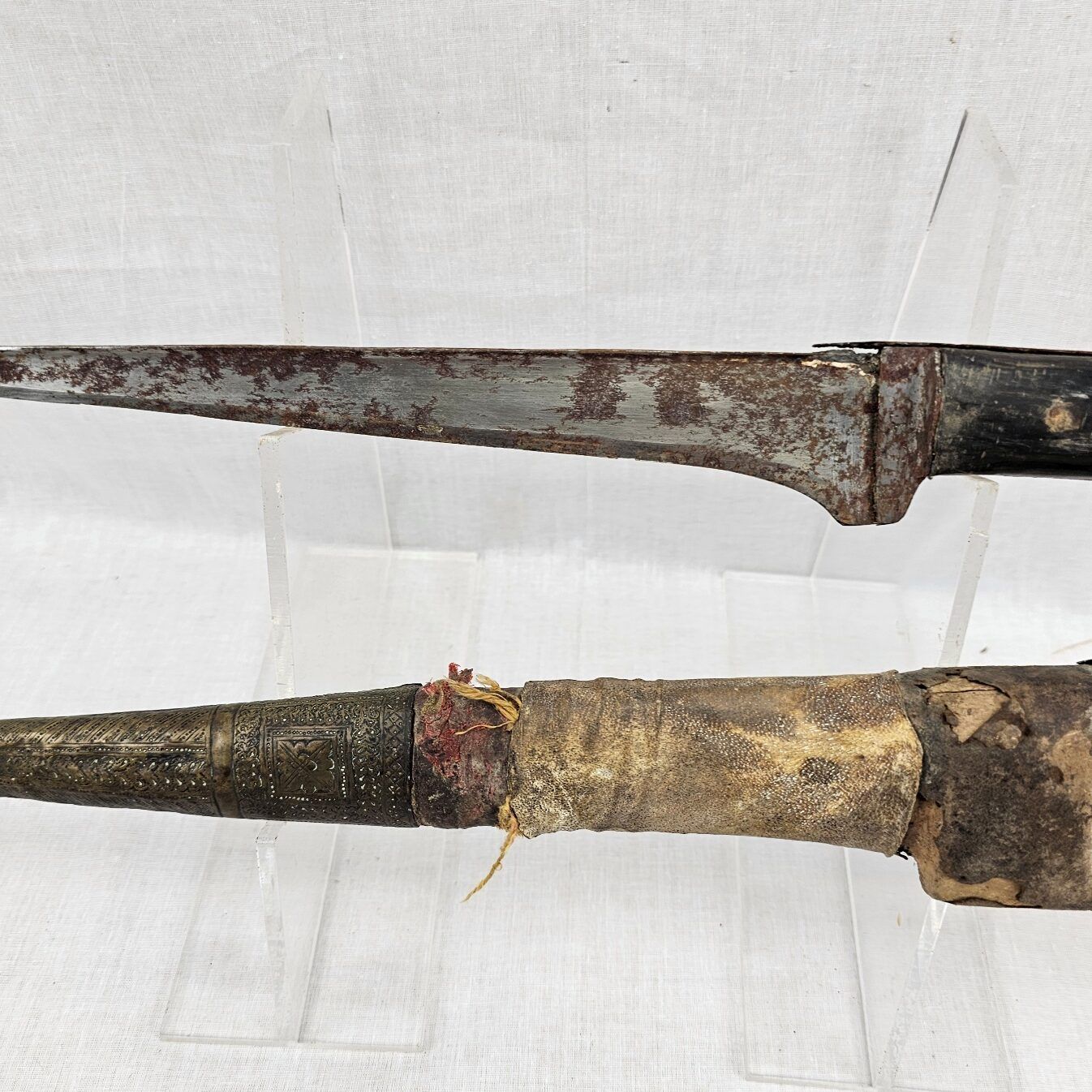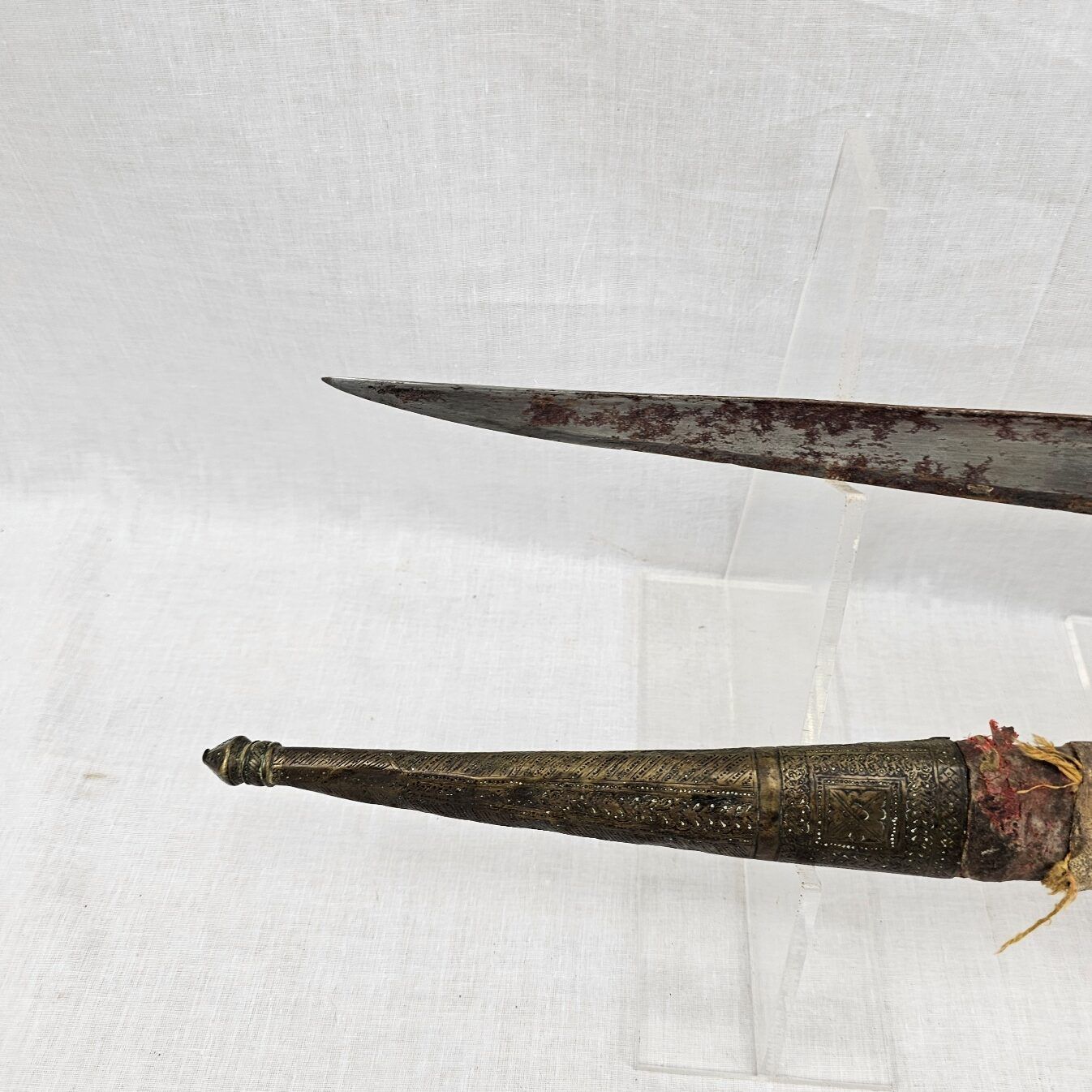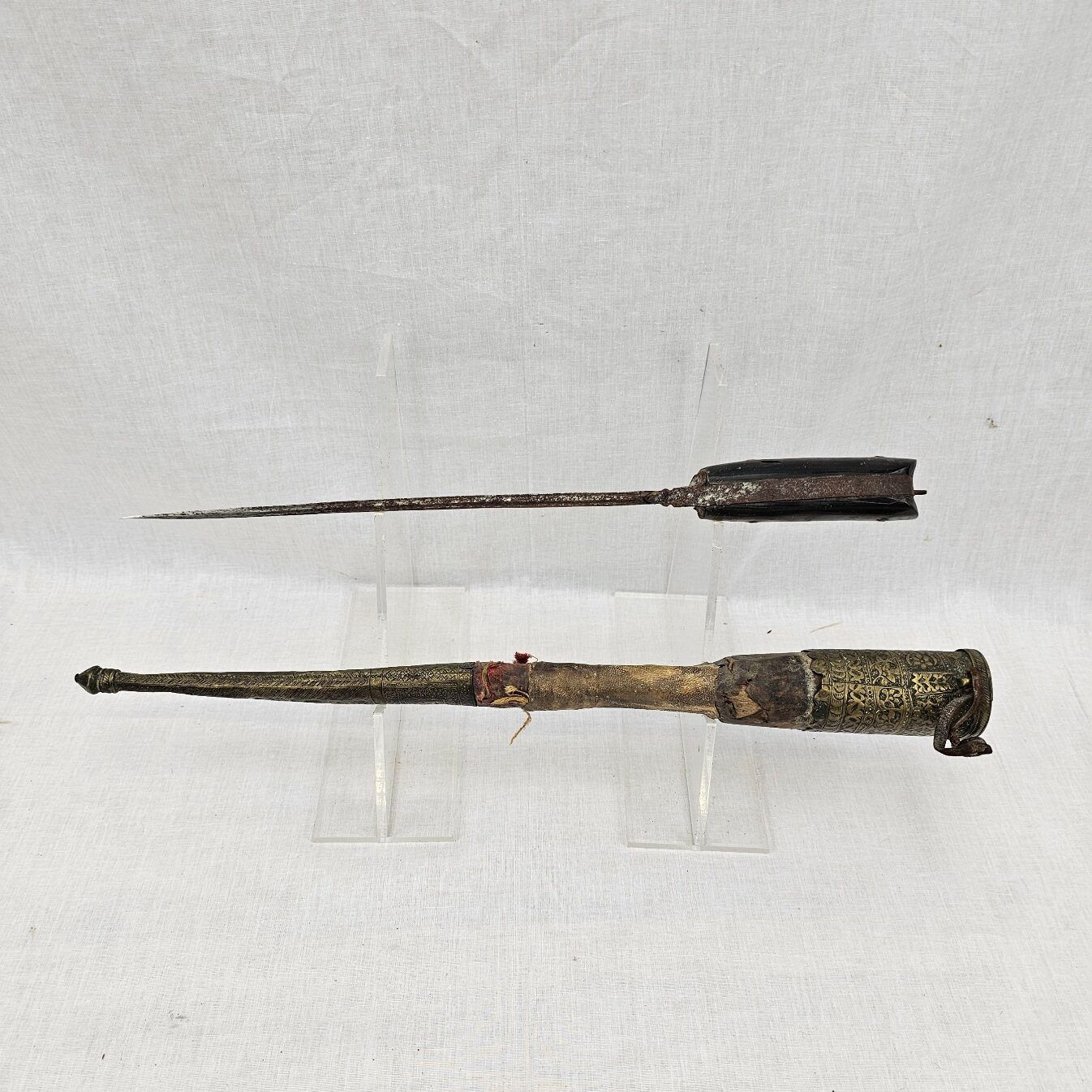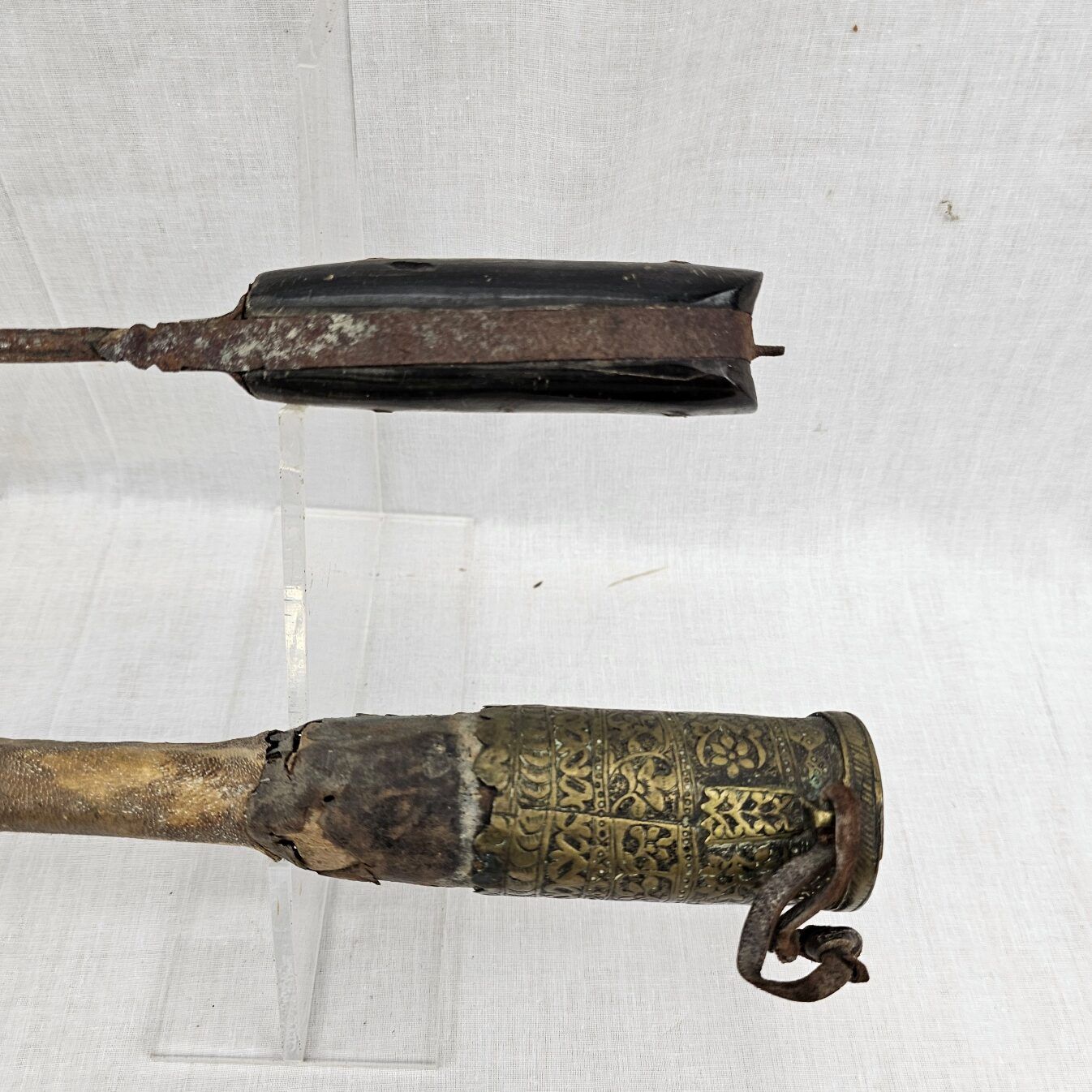~ 19th Century Indo-Persian/Afghan Choora Knife or Pesh-Kabz Dagger and Scabard ~
The 19th Century Indo-Persian/Afghan Choora Knife or Pesh-Kabz Dagger is a traditional straight-bladed weapon that originates from the Indian subcontinent, Persia (modern-day Iran), and Afghanistan. These blades were highly prized for their craftsmanship, durability, and effectiveness in close combat, and they have become collectible items, particularly due to their historical and cultural significance.
The Choora or Pesh-Kabz features a robust and wide blade, often slightly curved (in the case of the Choora) or straight (more typical of the Pesh-Kabz).
The blade is typically single-edged, though it tapers to a reinforced, narrow, and razor-sharp point.
This design makes it particularly effective for piercing armor or thick clothing, and it was used in battles where penetrating tough materials was essential.
The blade is often made from Wootz steel, a high-quality material known for its strength and distinct grain patterns.
The Pesh-Kabz in particular was designed to deliver powerful thrusts capable of penetrating mail armor, with a distinct T-section in the spine that made the blade unbreakable and highly rigid.
~ Dimensions ~
The length of the dagger is 40cm with a blade of 28cm.
~ Condition ~
As seen in the pictures there is age-related rust to the blade and wear on the scabbard.
The handles were traditionally crafted from materials like bone, ivory, wood, or horn. Some higher-end variants could also feature silver, brass, or gold inlays, often with intricate designs.
The handle was typically designed with a curved grip, fitting comfortably in the hand and providing excellent control for both slashing and stabbing movements.
A guard between the blade and handle was often absent, although some later designs included a small crossguard for added protection during combat.
These weapons often came with a finely crafted leather scabbard, sometimes adorned with silver or brass fittings. The scabbard was practical for safe carrying but was also an opportunity to display craftsmanship.
In higher-status versions, the scabbard would be highly decorative, featuring engraving, embossing, or ornamental designs.
Design Variants:
Choora: The Afghan Choora is a regional variant of the traditional Pesh-Kabz. It typically has a more curved blade and a simple handle. These knives were used by the Pashtun tribes and are well known for their practicality in both combat and as a utility tool.
Pesh-Kabz: The Pesh-Kabz, originating from Persia and later becoming popular in India and Afghanistan, has a more straight, tapered blade designed specifically for armor penetration. The design focus is on thrusting rather than slashing.
Historical Context:
Pesh-Kabz: The name Pesh-Kabz comes from the Persian language, meaning “fore-grip” or “before the grip,” referring to its construction. These daggers were commonly used by warriors in regions of Persia, India, and Afghanistan. They became famous for their ability to pierce through chainmail armor, making them valuable in hand-to-hand combat.
Choora: The Afghan Choora knife was more widely used by tribes in the mountainous regions of Afghanistan and the Indian subcontinent. This curved knife became associated with Pashtun warriors, known for their fearlessness and skill in combat. The Choora was an essential part of their fighting arsenal but also had cultural significance as a tool and weapon.
Both weapons are closely related in terms of design philosophy, focusing on durability, versatility, and effectiveness in combat.
Function and Use:
These knives were designed as combat weapons for close-quarters fighting, but they also served as utility tools for everyday tasks.
The Pesh-Kabz, with its reinforced spine and pointed blade, was specifically designed to penetrate armor, especially chainmail, making it a favored weapon in regions where such armor was still in use during the 18th and 19th centuries.
The Choora, although less specialized for piercing armor, was a multipurpose blade used both for combat and as a tool in the rugged mountain regions of Afghanistan. It became a part of Pashtun tribal tradition.
Craftsmanship and Decoration:
Weapons from this period and region were often viewed not only as functional tools but also as works of art. Skilled artisans would add decorative features such as engraving, inlays, and ornamental carvings to the blades and handles.
The Pesh-Kabz in particular, when owned by nobles or royalty, would sometimes be encrusted with jewels or precious metals. The blades might be etched with intricate designs, and the handles would often feature inscriptions or symbols representing the owner’s family, tribe, or allegiance.
Choora knives might also have decorative elements, especially in the form of carved or inscribed bone handles, but they tended to be more practical in their construction compared to the highly decorative Persian Pesh-Kabz daggers.
Cultural Significance:
In regions like Afghanistan, the Choora knife was more than just a weapon. It was a symbol of manhood, tribal identity, and self-reliance. Warriors carried these knives as part of their everyday gear, and they were often passed down through generations as treasured family heirlooms.
The Pesh-Kabz carried similar cultural weight in Persia and India, where owning an ornately crafted blade was a sign of wealth and power, especially among the nobility and warrior classes.


